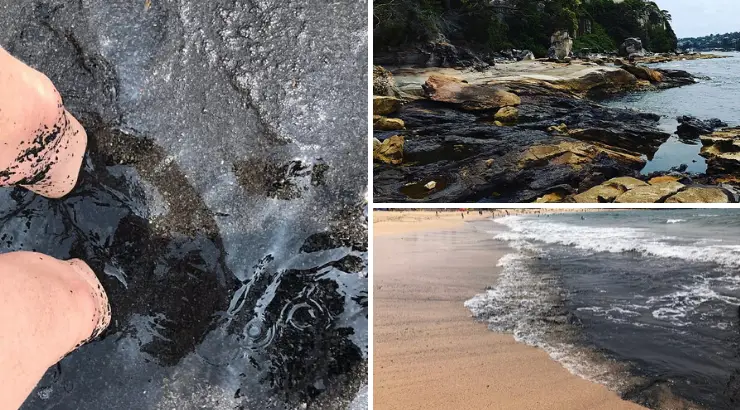Environment
Sydney’s Beaches Turned Charcoal-Black, Air Rendered “Unbreathable” as Bushfires Rage On
Scientists are warning that drinking water supplies could soon be poisoned.

(TMU) — As Australia continues to cope with a historic wave of bushfires in New South Wales (NSW), Sydney’s normally immaculate beaches have turned almost completely black in an ominous sign of the effects that raging fires are having on the environment.
Over the past weekend, beachgoers took advantage of the Australian summer to dive into Sydney’s coastal waters despite the clearly charcoal-like appearance of the waters. Marine ecologist Emma Johnston was among swimmers who hazarded a swim in the black waters.
Prof. Johnston told the Daily Mail:
“Everyone was covered in ash, it was all through our bathers, all through our eyes and ears.”
In the meantime, photographers and social media users shared images of blackened waves of water tumbling onto the charcoal-tainted beaches of the region.
Kate Selway, an earth scientist at Macquarie University in Sydney, posted video to Twitter of the sooty, tar-like waters at Balmoral Beach, where the water at this time of year is usually a healthy blue.
In her tweet, Selway said:
“This used to be trees, homes, wildlife. Shocking and very sad.”
https://twitter.com/kate_selway/status/1203613565938290688
While documentarian Bill Code tweeted out footage from Malabar Beach near the city’s eastern suburbs, sardonically noting, “Take a swim in the charcoal, kids.”
In reply to the tweet, Prof. Johnston said:
“I’ve been swimming in flakes of charred wood for more than a week & there’s no more likely explanation than aerial deposits from the #bushfiresNSW—a massive pulse of organic enrichment—could have eutrophic consequences in contained water bodies.”
Take a swim in the charcoal, kids – Sydney beach today (Malabar) #NSWfires #ClimateChange #AustraliaFires pic.twitter.com/Q5OlLGvhQ0
— Bill Code (@billcode) December 7, 2019
Johnston and other scientists are warning that drinking water supplies could be poisoned by the continued bushfires, which have overwhelmed firefighters and could grow worse as temperatures are expected to soar in the coming week.
Prof. Johnston fears that Sydney itself could have a crisis when the rain washes ash and other burnt matter into urban storm drains.
She told SBS:
“It’s not the saltwater places where people need to be worried, it’s when you’re drinking fresh water that’s contaminated that you have real human health issues.”
Among these dangers is the possibility that large algal blooms in drinking water catchments could compromise drinking water supplies. Likewise, huge amounts of fish could perish in such an event.
She explained:
“With that high density of particulates, you can get the clogging of fish gills or filter feeders might have trouble feeding.
A second, more indirect effect is that can trigger an algal bloom. And if you get a really, really large algal bloom, when that starts to decompose it uses up all the oxygen and can cause fish kills from low oxygen environments.”
On Tuesday, NSW was blanketed in a shroud of “unbreathable” air as temperatures climbed and firefighters kept up the fight against about 83 raging fires. Authorities said that the air quality in Sydney on Tuesday was among the worst ever recorded in the region’s history, 7 News reported.
It remains too early to tell how impactful prolonged exposure to the smoke will be on residents, according to a statement from Climate Council member and public health expert Hilary Bambrick.
Bambrick explained:
“These are the health consequences of a changing climate that health professionals have been warning us about.
Climate change is supercharging bushfires and that is what we are seeing now with massive, unprecedented fires producing unbreathable air.”
By Elias Marat | Creative Commons | TheMindUnleashed.com
Typos, corrections and/or news tips? Email us at Contact@TheMindUnleashed.com
